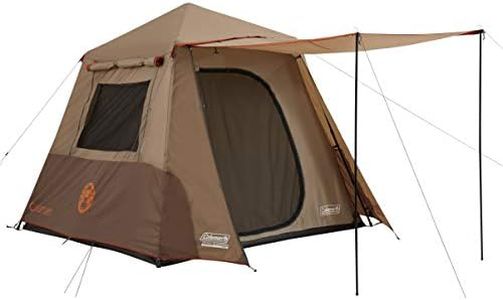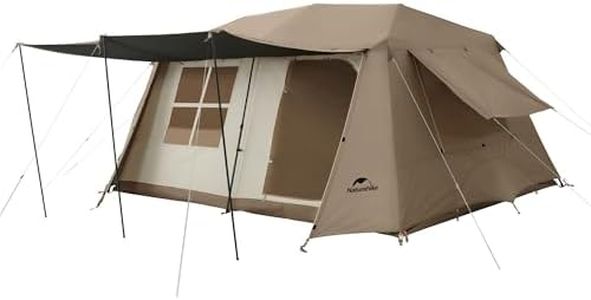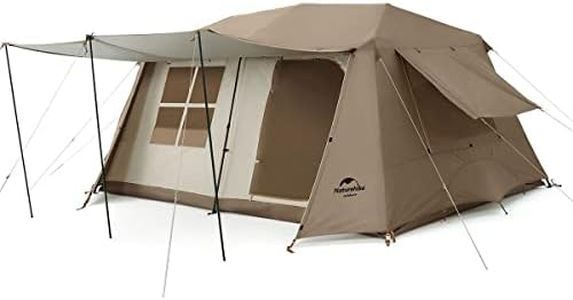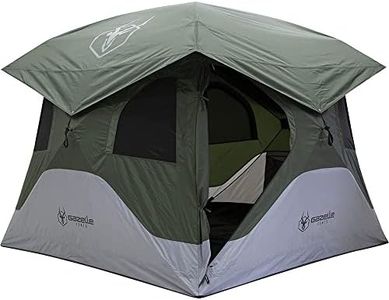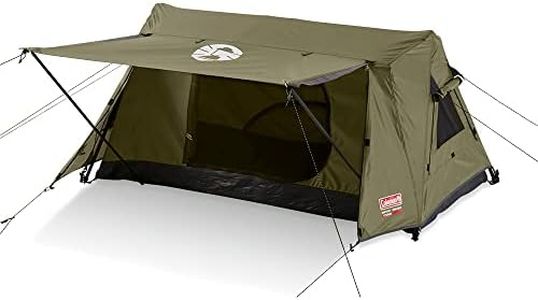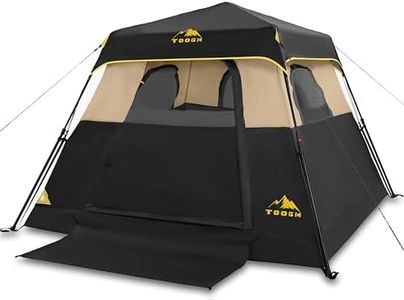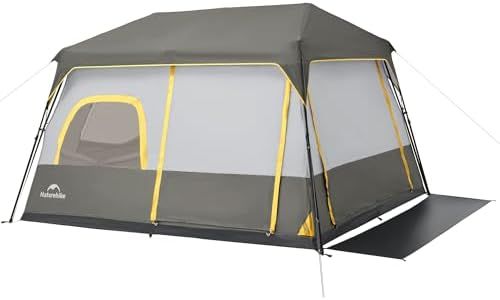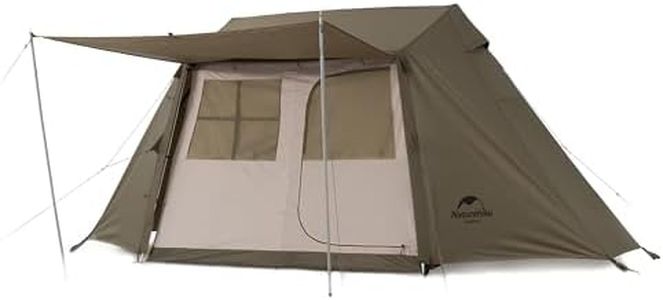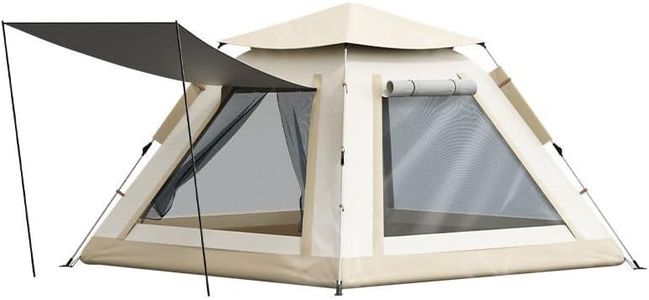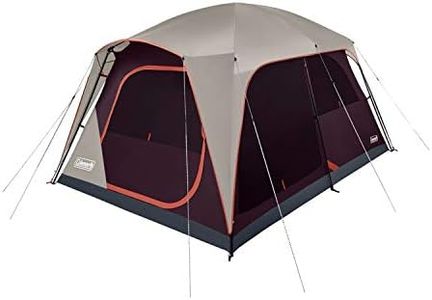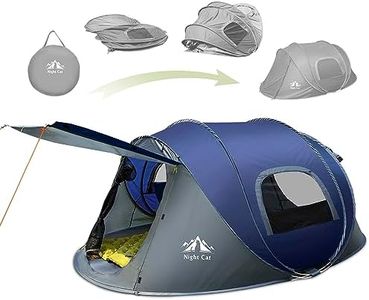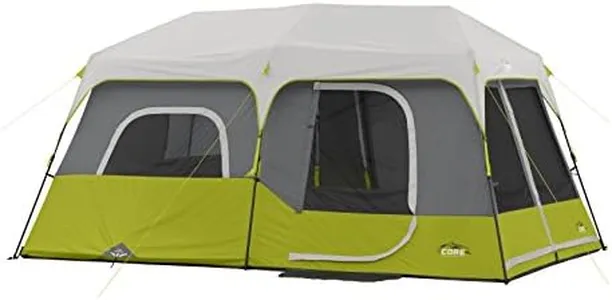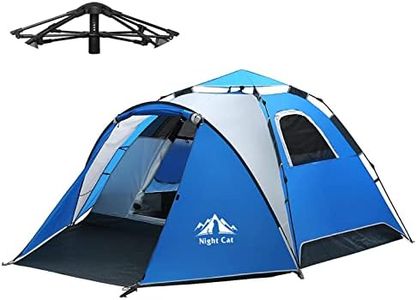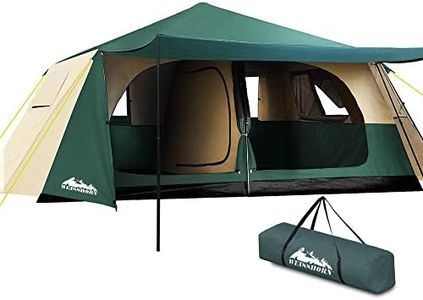We Use CookiesWe use cookies to enhance the security, performance,
functionality and for analytical and promotional activities. By continuing to browse this site you
are agreeing to our privacy policy
10 Best Instant Up Tents
From leading brands and best sellers available on the web.Buying Guide for the Best Instant Up Tents
Instant-up tents are a fantastic option for campers who want a hassle-free and speedy setup. These tents are designed with frames that can be erected within minutes—sometimes even seconds—saving you time and effort, especially when arriving late at a campsite or facing bad weather. When choosing the right instant-up tent, it’s important to consider who will use it, typical camping conditions, and your transport and storage requirements. Each feature and specification of an instant-up tent affects how well it will suit your camping needs, so understanding these key points will help you make a confident and practical choice.CapacityCapacity refers to the number of people a tent can sleep comfortably. This is important because it determines if everyone in your group will fit with enough personal space. Tent capacity values typically range from 1-person up to 10-person or more. Smaller tents save space and are lighter to carry but offer less room for gear or movement, while larger tents provide more space but are bulkier and heavier. When deciding, think about how many people and what kind of gear (like sleeping bags or backpacks) you’ll bring—if you want a roomy experience or need to store lots inside, aim for a tent sized for at least one more person than will actually sleep in it.
Setup SystemThe setup system describes the mechanism that allows the tent to 'instantly' pop up or pitch. Some instant-up tents use a central hub that you push or pull, while others have pre-attached, telescoping poles. The main goal is ease and speed, but the system can affect packing size and how simple it is to repack the tent. If you value extreme speed and want zero fuss, look for a push-up or pop-up mechanism; if you want a bit more sturdiness, telescoping pole systems are often more durable. Consider your comfort with assembly and whether you’ll be setting up camp alone or with help.
Weather ResistanceWeather resistance is how well a tent can handle rain, wind, and varying temperatures. Features like waterproof coatings, sealed seams, strong frames, and rainflies are key indicators here. Lightweight, fair-weather tents might handle light dew or drizzle but can leak or topple in storms; moderate tents manage standard rainfall and breezy conditions, while highly weather-resistant models are suitable for harsh downpours and gusty winds. If you only camp in summer or dry areas, less protection may be fine, but for unpredictable or rugged locations, invest in better weatherproofing to stay dry and safe.
VentilationVentilation refers to the tent’s ability to circulate air, reducing condensation and keeping you cool. This is achieved through mesh panels, windows, and vents. Tents with lots of mesh and multiple vents allow more airflow but can be chilly in cold weather, while tents with fewer openings retain heat but risk stuffiness. Choose based on the climate—if you camp in hot places, maximize ventilation; for cold conditions, select a design with closable vents to trap warmth.
Weight and Packed SizeWeight and packed size indicate how heavy and bulky the tent is when disassembled. Heavier, bulkier tents may be tough to carry or store but often offer more space or stronger materials, while lighter, compact tents are easier to transport but may be smaller or less sturdy. If you drive to your camp spot or only carry the tent short distances, weight and size may matter less, but if you walk, bike, or travel by public transport, a lighter and more packable tent is key.
Interior FeaturesInterior features cover things like storage pockets, gear lofts, lighting hooks, and room dividers. These extra touches make camping more convenient and organized but can slightly increase the tent’s weight or complexity. Tents with plenty of storage help keep the sleeping area tidy, while dividers offer privacy in larger tents. Consider your needs—if you’ll share with kids or want to keep gear organized, prioritize these features; for solo or minimalist campers, basic interiors may be just right.
